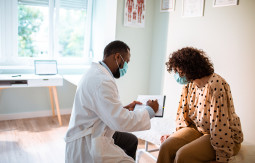Vulvovaginitis, or vaginitis, affects millions of women each year.1
Vulvovaginitis – defined as a spectrum of conditions that cause vaginal and sometimes vulvar symptoms – is the most common reason that women visit their primary care provider for a gynecologic-related issue in the US.1
It is responsible for more than 10 million office visits annually,1 but it is thought to affect many more women who do not consult a healthcare provider and try to self-treat.2
The symptoms of vaginitis that usually trigger women to seek help range from abnormal vaginal discharge and odor, to a burning sensation or pain during urination, and painful intercourse.1,3-6
Because these symptoms are quite unspecific and can be linked to multiple causes, a proper diagnosis can be difficult to obtain, but it is nonetheless critical.1,3-6 A molecular assay such as BD MAX™ Vaginal Panel can help.1
Vulvovaginitis negatively impacts women beyond just physical health.1,7,8
The symptoms of vaginitis negatively impact a woman’s quality of life, self-esteem, self-image, productivity, and sexual health.1,7,8
In fact, it was reported that mental health is the most affected aspect of quality of life when it comes to experiencing vaginitis. Almost 7 out of 10 women report depression or anxiety during acute episodes.8
And impact on quality of life is not the only issue.
1 out of 2 women reported that vulvovaginitis impacted their work productivity and this health issue was responsible for an average loss of 33 work hours per woman, per year.8

Physical health and quality of life8
-
63% of women reported problems related to pain/discomfort
-
Symptoms negatively impact self-esteem, self-image, and productivity

Mental health8
- 68% of women reported depression or anxiety during acute episodes

Work productivity8
- 50% of women claimed that recurrent vulvovaginal candidiasis impacted their daily normal activity
- 33 working hours are lost per year - on average














